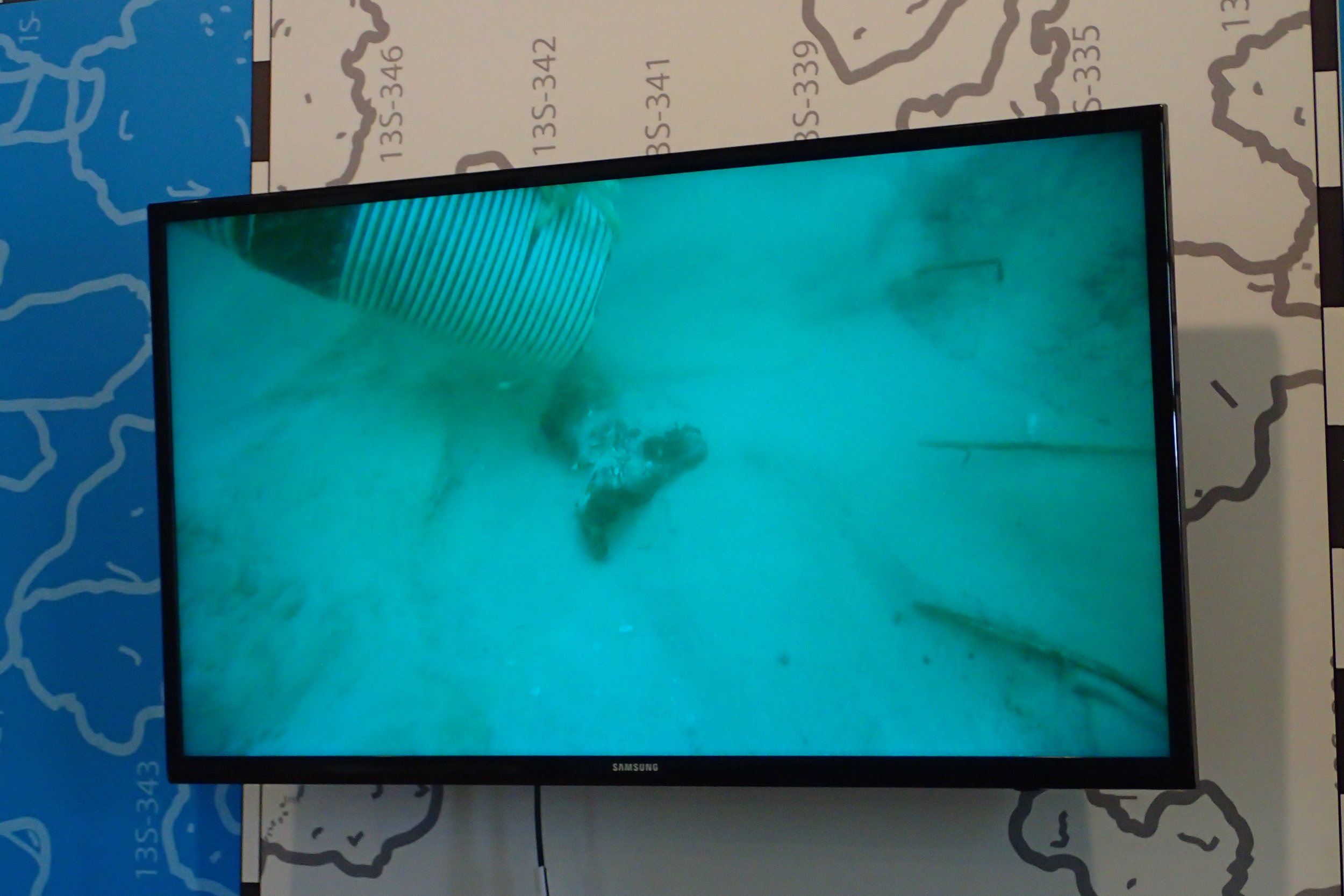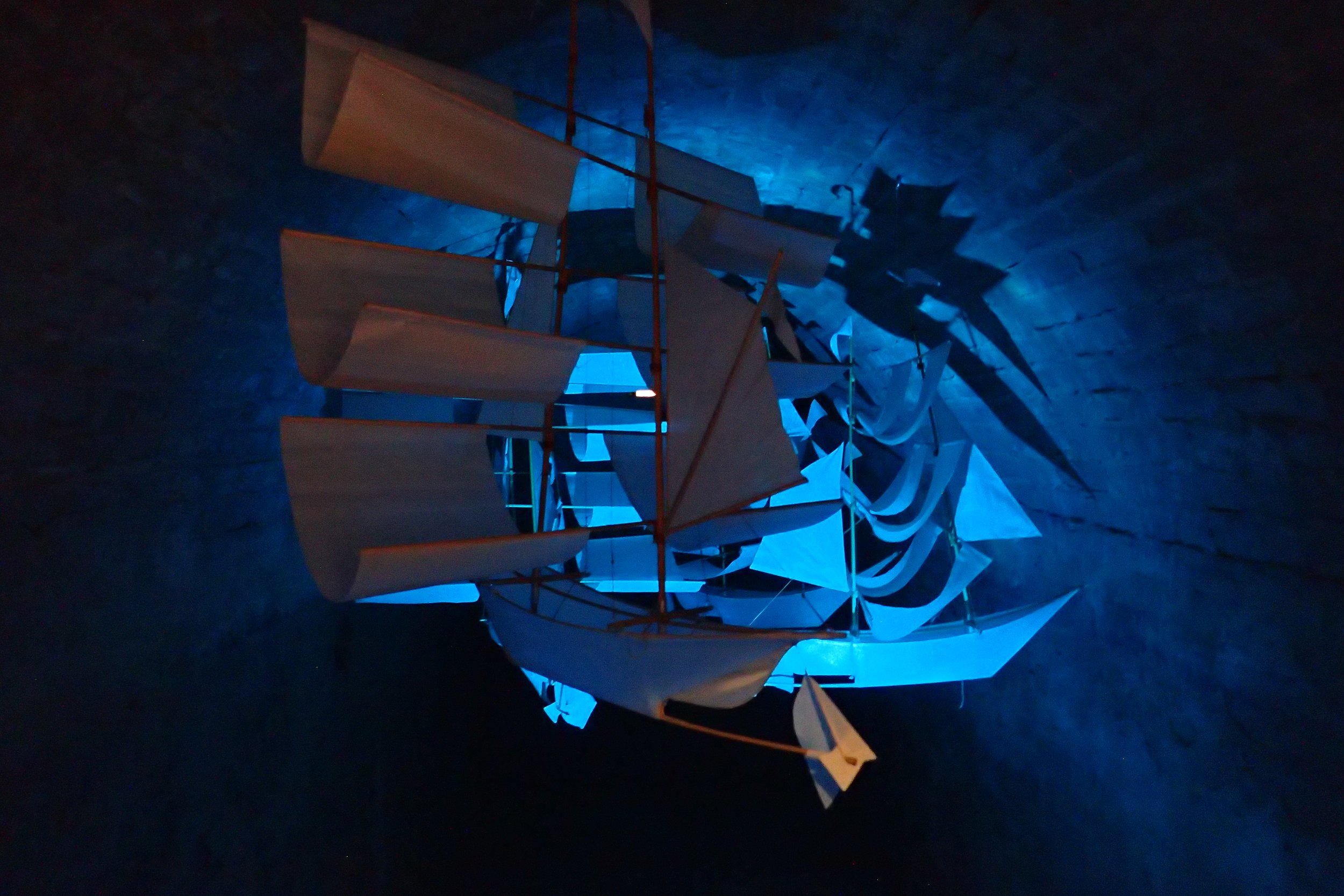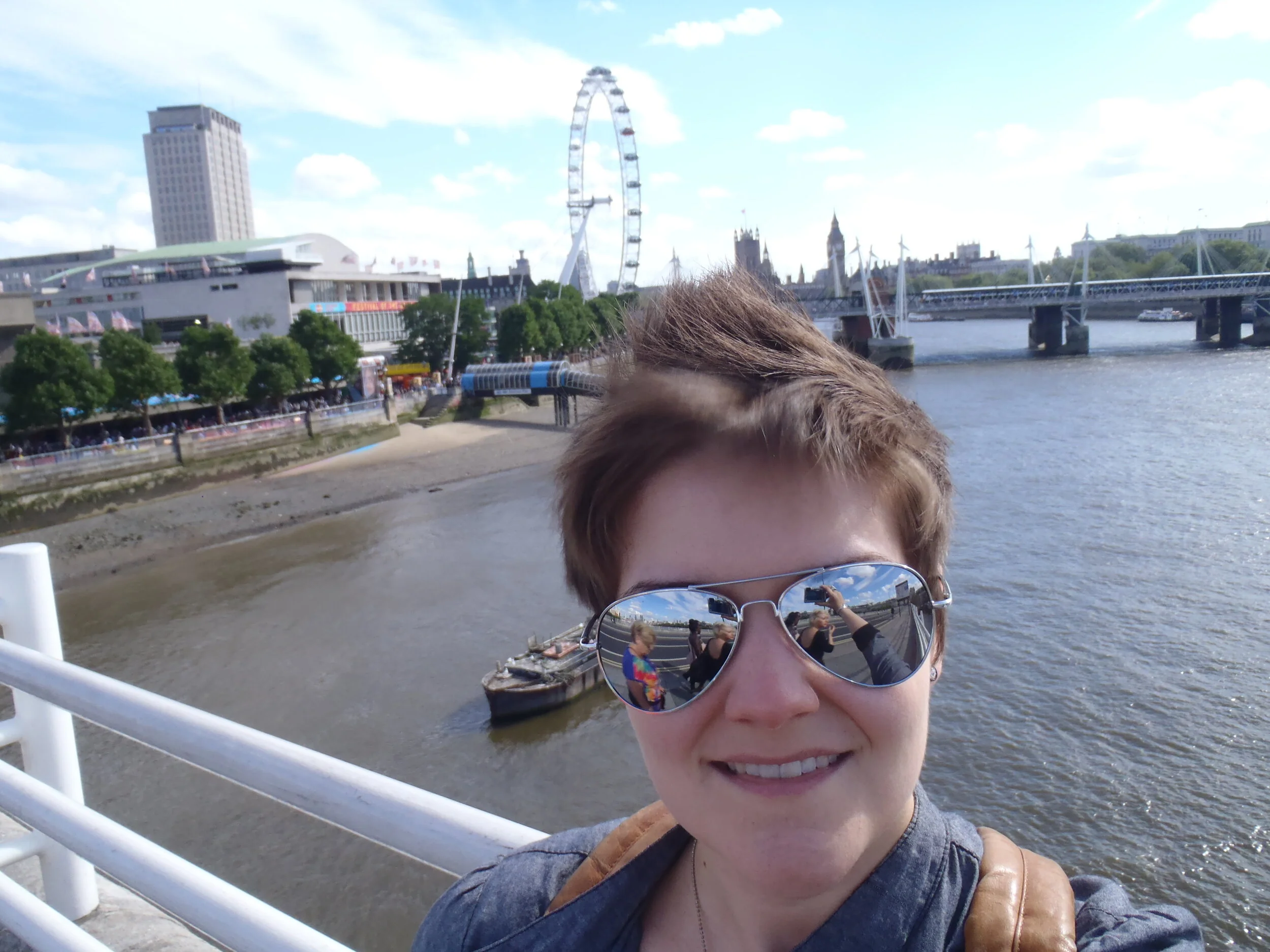I don’t do paid tours all that often but sometimes they are worth it! When Kim and I visited the town of St. Augustine, we decided to also check out the famous lighthouse nearby.
The St. Augustine Lighthouse and Maritime Museum have been there for almost 150 years! It’s a beautiful, actively working lighthouse overlooking the East coast region just across from St. Augustine.
This was a great activity to do during relatively clear skies—there were no thunderstorms to keep us from climbing to the top (unlike our first visit to the Castillo Del San Marcos the day before)! I also learned a bit about maritime archeology, which I loved to see as a SCUBA diver!
Access & Admission
The lighthouse sits on Anastasia Island, across from the town of St. Augustine. It sits between two waterways, the Matanzas River and the Atlantic Ocean, with a little “Salt Run” that cuts in between where the Lighthouse is and Conch Island (a strip of land attached to Anastasia Island). There is ample parking just outside the shop where tickets are sold.
General admission for the Lighthouse and Museum is $14.95 for adults. Of course, the admission is meant to go toward maintaining the lighthouse and its history.
With your ticket, you can climb the lighthouse and explore the maritime museum. You can also access two additional experiences: daily demos and the surrounding hammock trails. There’s even a little scavenger hunt that you can participate in while hiking the hammock.
Going Up The Lighthouse
Kim and I decided to climb the lighthouse first and foremost. After not being able to go up to the top of the Castillo De San Marcos the day before, we knew that we needed to prioritize anything we could go up before any thunderstorms came around!
The lighthouse is struck by lightning several times a year.
There were twisty stairs going up the lighthouse that would level off at different spots. Informational signs were painted into the white brick at each level. These signs shared factual information about the lighthouse history and about the experience of going up to the top. I will share some of this info throughout this post.
For instance, we learned from the walls of the lighthouse stairwell that we would burn 24 calories going up the 219 steps to the top.
The walk up only took maybe 10 minutes. We just had to step to the side to let others down at different points. But we would distract ourselves by reading the information on the wall or looking out the windows for a preview of the views.
Views From The Top
The tower is 161 feet tall, so we really could see a great distance from the top.
We fully took in the 360-degree views by walking the balcony that surrounded the top of the tower.
From up there, I could also clearly see that the top of the lighthouse—it is painted red!
The antique Fresnel lens inside was made by a Parisian lens maker. The lens has 370 prisms and weighs 2 tons. A 1000-watt lightbulb is its current light source since it was electrified in 1936.
The lens was almost replaced with an airport light at one point after 19 of the prisms were broken by rifle fire in 1986. But a group of about 15 women who were in charge of the Lighthouse restoration project starting in 1980 defended against it. The prism was fully restored.
The sky was mostly grey and cloudy. It was humid out but not too hot since the sun wasn’t beaming down at us. This meant we could rest at the top and cool down a bit from the ascent.
If you were wondering, yes, it was windy up there! The breeze definitely helped us cool down and made for some fun photos of my hair.
We spent at least 20 minutes at the top of the lighthouse. But after a while, there is not much else to see. We knew we needed to get back on the road soon but we still had the museum to check out.
What goes up, must come down.
Keeper’s Building & Maritime Museum
After we exhausted our time at the top, we made our way back down to explore parts of the museum. The bottom of the lighthouse has the keeper’s building with little artefacts and info signs.
I learned that the lighthouse has been established since October 15, 1874. This means the lighthouse will reach its 150th birthday in 2024. I imagine there will be some fun events happening throughout the year and especially in October, marking the occasion!
I also learned how the lighthouse keeper stored the oil. One room in the keeper’s house displayed four large metal storage units with spouts, each of which holds up to 100 gallons of oil.
The first keeper, William Russell, lit the lard oil lamp for the first time in 1874 by carrying 20 pounds of oil all the way to the top. The lighthouse was not automated until 1971.
Directly across from the lighthouse is the Maritime Museum. We still had some time, so we walked across and entered to check things out.
Inside, we found various rooms and a basement filled with artefacts, videos, and historic information.
My favorite part of the museum had to be the basement.
A TV screen mounted on the wall just before the entrance to the basement showed a live video of SCUBA divers doing an underwater excavation. An underwater vacuum of sorts was shown sucking sand off of artefacts on the sea floor.
Twisty stairs then brought us down to where all the underwater shipwreck artefacts were on display.
It was very interesting to see all the different sort of items they found, from tiny little fishing weights to whole cannons.
The basement area had a slightly creepy feel to it. In fact, the entire area is known for its ghost stories and supernatural legends so much so that there are even tickets sold for "Dark of the Moon" ghost tours and ghost-themed private events.
So when I rounded one corner and saw a mannequin of a SCUBA diver, I did jump a little!
Another video was displayed on the wall showing people carefully cleaning an excavated ship gun.
Another part of the basement was inaccessible but there was a little window to see into it. Hanging inside, they made a nice little display of model ships. It was a little cubby area that you could peer into and they put blue lighting inside to perhaps mimic the ocean and moon at night.
Also kind of eerie and spooky! I thought this was a really cool looking display, though.
In Conclusion
The St. Augustine Lighthouse and Maritime Museum is definitely a worthwhile detour from the main town of St. Augustine. The views from the top alone are worth the visit and the 219 stairs you must climb to get there.
The historic information about the area, the seaside living, and shipwrecks was really interesting. With the trails to explore, too, there seems to be something for everyone.
I’d definitely consider returning for the 150th anniversary, as I am sure they will have some really special programming and events at that time in 2024!











